Michael's Performance/Wellness Balancing Act
Michael engages APP to help him reorganize and restart his senior leadership team. With APP’s assessment tools and team effectiveness support, Michael makes some difficult decisions and has completed a very effective goal and norm setting process to get off to a great start.
In this process, he has also learned that others watch him for cues as to appropriate “balance” and that his example of all-work, all-the-time inspires some but discourages most. When he shares this with his partner at home, she replied, “You’re just figuring that out?” She reminds him that their children are entering their teen years - so his time with them will be diminishing no matter what he does.
Like many, Michael realizes the push-pull of work life and personal life. He has tried to balance his role as “provider” with his role as “parent” just as he tried to balance his role as “manager” with that of “leader”. With his most productive years still ahead, Michael wants to modify his path without sacrificing his professional success.
APP works with Michael to develop a plan that over time helps:
- Michael's discipline to shift the balance of quality time between work and loved ones
- The perception and reality of Michael as a leader who sustains performance and wellness for self and team
- Increase Michael's focus and attention to what is most important - improving decision quality and responsiveness
How did he do that?
With APP, Michael completes a thorough analysis of his motives and values and work habits, including his career and family goals and interests. While he is very successful at work and perceived to be so by his family, they are not getting enough of each other. His athletic nature and desire to learn new things, shared by his family, is not being expressed or shared at home. The absence of an interest shared with his family and his desire for success at work has created an imbalance with implications at both places. Being the outcome-oriented, successful person he is, Michael wants to effectively integrate his professional and personal lives.
Michael starts with his family. Michael’s kids study karate and he and his wife like what it does for them. They decide to join the dojo and commit to weekly classes with the kids. Michael has to leave work in time to make class, but it’s a commitment he makes and keeps.
Michael lets the office know that he can’t be interrupted during class – sending signals of his new priorities to work and home. At home it becomes a practice that they share in the moment and in memories. It also shifts the perception of Michael at work to a “work hard / play hard” person. It’s not long before he realizes he can apply this in other ways, like attending family events without multi-tasking on the conference call. Now he’s applying mindfulness - doing one thing well instead of two things half way.
“Now he’s applying mindfulness - doing one thing well instead of two things half-way.”
Karate has brought a new level of mindfulness to Michael. By learning new skills with his family, Michael creates a level playing field for them with him that they could play together. By taking up something as unusual as karate, they select an activity that requires and rewards 100% mindfulness from bow to bow and each moment between. That practice of mindfulness informs Michael’s approach at work – he chooses the most important things for focus and focuses on them entirely in the moment.
Through integrating around a practice, Michael has improved several different life domains through what seems to be a single activity. They could have selected from many activities – what he picks is less important than picking and sticking with it. When one integrates performance and wellness, the benefits are the efficiency of achieving more through less effort and the effectiveness of gaining the highest value from the practice.


